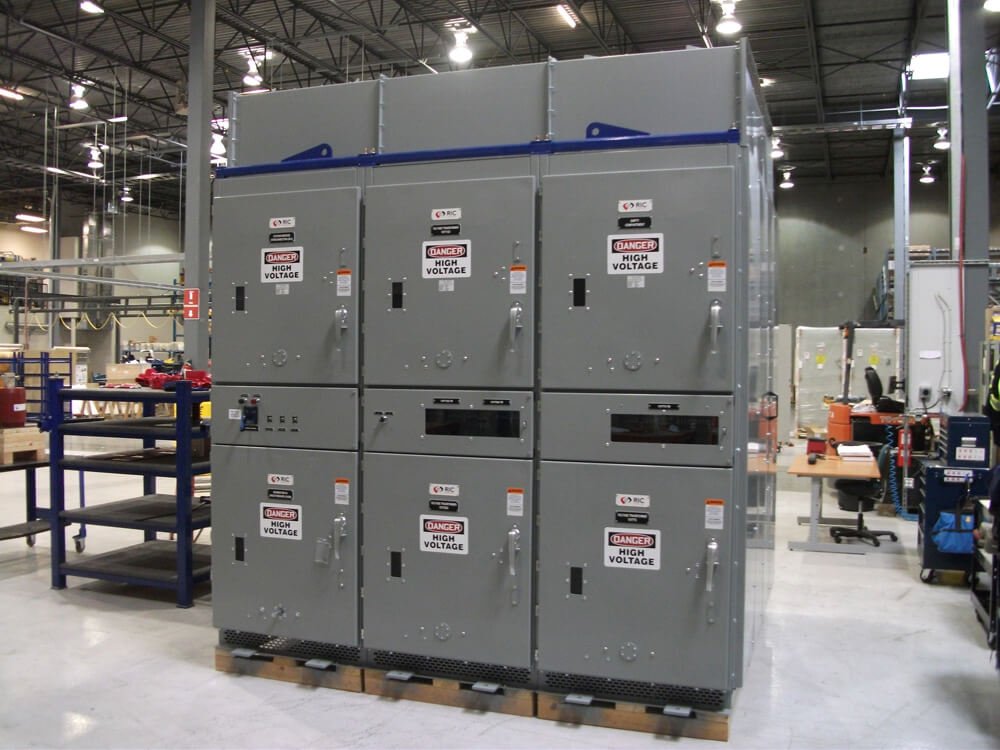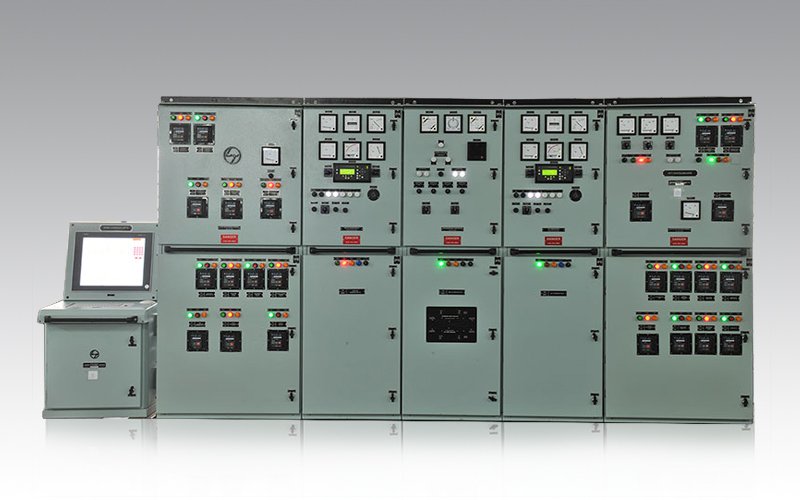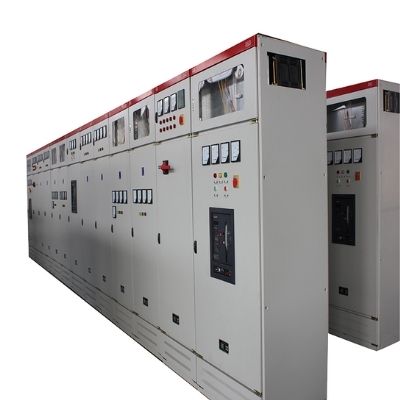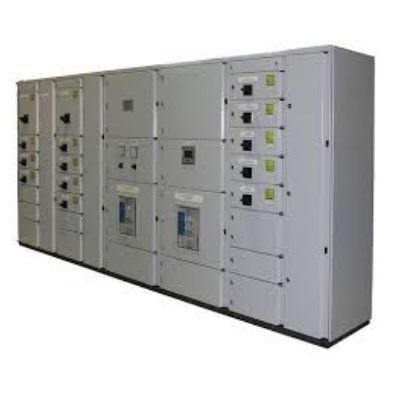Need Help of Buying Reliable Electric Switchgear for your Business?
China-based, No.1 Electric Switchgear Manufacturer and Supplier
Your Leading Electrical Terminal Connections Supplier and Manufacturer in China
KDM produces wide range of electric switchgear from different dimensions, features, and finishes. Our skilled designers and engineers ensure excellent property of resistance switchgear to perform both outdoor and indoor applications. Provides full protection in most critical power distribution and technology. Our electric switchgear is fabricated using top-rated materials and popular parts for longer life span. Guarantee high performance yet lowest price offered.
- Vast selection of electric switchgear serve different sector
- Free customized design to meet your need
- Affordable and Top-quality operation units
- One-stop system service for your order
KDM Electric Switchgear Series
All air-insulated switchgear has been tested and certified to different quality parameters. Therefore, you can ensure 100 guaranteed-quality products attainable in KDM.
Get the best deal of gas-insulated electric switchgear in KDM. We have plenty of options available for you. We are actively developing range of product according to market demand.
KDM high voltage electric switchgear offer highest efficiency with maximum availability on the operation. Through driving technology innovations our units can withstand heavy services.
For any large buildings, industrial and electricity companies, our industrial electrical switchgear are perfect fit for this application.
KDM designed safe, compact, and intelligent low voltage electric switchgear that will surely enhanced your system. All this equipment can be custom-built according to your request.
The medium voltage electric switchgear is constructed and developed with the most perfect production for this purpose.
Send your Inquiry on KDM Electric Switchgear
KDM provides full services and effective solutions for your electric switchgear orders. We can handle the different processes and strict quality inspections to produce well-engineered high-quality electric switchgear for your project needs. Whether you need to order for your retail, wholesale, or any business purposes, KDM will guarantee international standards electric switchgear supplies.
Our electric switchgear is suitable for your needs.
- Electric Switchgear engineering adheres to IEC, ANSI standards.
- Specializing electric switchgear production for 10 years
- Custom-built according to specific requirement
- On-time delivery, full technical support
Related Products of Electric Switchgear
KDM Electric Switchgear

KDM electric switchgear offer highest protection and dependability to the most critical power and electrical distribution and technology.
Controlling, monitoring and preventing unit from harmful environment and elements is possible.
With this electric switchgear, all your home, business establishment, and building construction electric supply challenges, solved.
In KDM, you can find range of electric switchgear that catered the most demanding power distribution needs.
Plus, we can also provide further services which support life-long cycle of the equipment.
Our electric switchgear is engineered and design with the finest quality raw material.
They are 100% safe and reliable for the toughest and challenging application.
We take all the responsibility of the whole production process.
From designing, engineering, manufacturing, to packaging and warehousing, you can always count on us.
In our production unit, we have equipped with high tech, innovative equipment which will the production undergoes.
With the qualified team of staff to manage this fabrication, you can ensure a high-quality standard component.
Additionally, these gears have been tested through various quality guidelines.
Some testing authority includes ANSI, IEC, CE, NEMA, and more other.
Due to that, you can therefore determine reliable sourcing with KDM Steel.
This electric switchgear can be avail at the very affordable factory-rate.
Whether you want to order large or minimal amount of unit, we can provide you excellent service.
Either installed indoor or outdoor application, we have standard switchgear for you.
Moreover, if you can’t find the appropriate equipment for your requirement, well, we can do bespoke service for you.
You can state your ideal switchgear through sending us your layout or even just idea.
We have well-experienced engineers that can perfectly design and bring life your imagination.
Custom-engineered switchgear includes custom dimensions, style, design, colors and finishes.
In KDM, you can take unique, innovative, authentic electric switchgear for your business or any other special requirements.

KDM, as one of the leading China-based electric switchgear manufacturer and supplier, we offer all-in-one reliable and cost-effective solution.
KDM has been in the engineering and manufacturing switchgears for more than 10 years.
We and our kind of product are known for their reliability, efficiency and affordability.
Day by day, we strive to always upgrade our product range to our valued customers.
In manufacturing, we only utilize the high-quality components and machinery.
For the last 10 years, our main focus is to design and manufacture component that conforms the highest international standard.

We always manufacture unit according to yours and our customers’ needs.
KDM electric switchgear tested meticulously before handling over to you.
Our technical team is expert on this field, they make sure every gear mechanically and electrically-approved.
In order to meet customer satisfaction, we strive to manufacture and offered the best solutions.
In any site projects, you can find innovative and practical solutions with KDM.
We had earned wide understandings and knowledge with this production.
If you have any questions or inquiry, please do get in touch with us.
We will provide additional useful and info. We look forward to your next project switchgear solution.
Electrical Switchgear – The Definitive FAQ Guide
Switchgear is a type of electrical equipment that is designed to control, protect and isolate connected electrical devices.
Switchgear is used both to de-energize devices to allow work to be done and to clear faults downstream.
Let’s become more familiar with such type of equipment.

What are the common types of switchgear systems?
There are tons of classification approaches when it comes to switchgear systems.
The most common, however, is the classification of a switchgear according to their voltage: low, medium and high voltage switchgear.
Other sources provide the classification of switchgear systems according to the place of application.
In such a case, outdoor and indoor switchgear can be named.
The vast majority of outdoor switchgear is also divided into several groups according to their IP and NEMA ratings.
There are also separate types of switchgear systems that can’t be placed in a certain group, e.g. SF6 switchgear, GIS switchgear, and so on.
Finally, we can separate switchgear into groups by construction type:
- Industrial. This switchgear has to protect the equipment from high loads inherent in the manufacturing and industrial sites.
- Utility. This switchgear is used in the utility transmission & distribution area.
- Marine. Such equipment is used in the electrical systems of maritime transport.
- Draw-out elements. This switchgear can be easily removed from the system without many tools and hassle.
- Fixed elements. Some switchgear is bolted with fasteners and other fixating elements, so you need certain tools to install/uninstall them.
- Live-front. Live front refers to switchgear where the cable and terminal are exposed. For example, the cable may be stripped at the end and inserted into an eyebolt terminal of a porcelain bushing.
- Dead-front. Dead front refers to switchgear where the cable and current-carrying parts are enclosed inside molded rubber components. These components typically consist of a bushing well, load break insert, and a load break elbow.
- Open. Open switchgear is made in the way where atmospheric air provides the main insulation path to earth. It has no practically no enclosure to ensure the free circulation of air.
- Metal-enclosed (ME). It is switchgear that is completely enclosed on all sides and the top with sheet metal.
- Metal-clad (MC). This is a more expensive variety of metal-enclosed switchgear that has the following characteristics: the main switching and interrupting device of removable type; grounded metal barriers to separate compartments and enclose all major circuits and parts; mechanical interlocks; insulated bus conductors and other features.
- Arc-resistant. Such switchgear is designed to redirect arc energy up and out of the equipment through ducts/vents outdoors away from equipment operators.
- MCC (switchgear that contains motor controlled centers)
We’ll discuss the better part of the above-mentioned types of switchgear later in this FAQ.

What are the main components of the switchgear?
No matter what kind of switchgear we are looking at, it will contain two types of components: power conducting components (like switches, circuit breakers, fuses), and lightning arrestors.
Latter ones are needed to conduct or interrupt the flow of electrical power.
The circuit breaker is another important part of each switchgear.
It is needed to interrupts fault currents.
The quenching of the arc when the circuit breaker disconnects the circuit requires careful design.
Other categories of circuit protection devices can be used inside the switchgear:
- Electronic fuses (an electrical safety device that provides overcurrent protection of an electrical circuit).
- ESD protection and diode arrays (these devices are needed to protect electronics from very fast voltage transients, such as lightning and electrostatic discharge).
- Fuse holders, clips and blocks (basically, it is an equipment to hold or nest fuses and other parts of the switchgear mechanism).
- Gas discharge tubes (are needed to dissipate voltage transients through a contained plasma gas. Gas discharge tubes or simply GDS have high insulation resistance plus low capacitance and leakage to keep up the normal operation of equipment).
- Power thyristors (is a solid-state component that acts as a switch to control voltage flow. They are robust and are used in applications involving high voltages and currents).
- Protection thyristors (components that are used for overvoltage protection).
- Electrical bus bars (are needed to conduct electricity within a switchboard).
- Transformers (designed to convert alternating current from one voltage to another).
- Resettable fuses (just like electronic fuses, resettable ones are used to protect the system against overcurrent faults in electronic circuits).

What kind of circuit breakers are used in the switchgear?
There are several types of circuit breakers used in the switchgear:
# 1. Oil circuit breakers
In the case of system failure, the oil circuit breaker blasts a jet of oil along the path of the arc.
When the oil begins to vaporize, it releases hydrogen gas.
This leads to the creation of a hydrogen bubble around the electric arc, that prevents re-striking of the arc after the current reaches zero crossings of the cycle.
This kind of circuit breaker is one of the oldest types.
# 2. Air circuit breakers
Air circuit breakers may act in two different ways.
Some air circuit breakers use compressed air to secure the system from failures, while others use the magnetic force of the arc itself to elongate the arc.
With the increase of the arc’s length, the available voltage will spread across it, and eventually, the elongated arc will exhaust itself.
In other air circuit breakers, the contacts can rapidly swing into small sealed chambers, resulting in the air blowing out the arc.
Air circuit breakers are usually able to terminate all current flow very quickly.
# 3. Gas circuit breakers
In the vast majority of cases, gas circuit breakers stretch the arc using a magnetic field and then rely upon the dielectric strength of the gas to quench the arc.
Such gas also cools the arc.
Advantages over other types include lower operating noise and no emission of hot gases, as well as quite low maintenance costs.
# 4. Hybrid circuit breakers
Hybrid type is a switchgear that uses the components of a traditional air-insulated switchgear (AIS) and gas-insulated switchgear (GIS) technologies.
It can be distinguished by a compact and modular design, that puts several different functions in one module.
# 5. Vacuum circuit breakers
Circuit breakers with vacuum interrupters have minimal arcing characteristics (as there is nothing to ionize other than the contact material), so the arc quenches when it is stretched by a small amount.
Near zero current the arc is not hot enough to maintain a plasma, and current ceases.
Such a gap can later withstand the rise of voltage.
Unlike the other types, vacuum circuit breakers are inherently unsuitable for interrupting DC (direct current) faults.
The reason vacuum circuit breakers are unsuitable for breaking high DC voltages is that with DC there is no “current zero” period at all.
The plasma arc can feed itself by continuing to gasify the contact material.
# 6. Carbon dioxide (CO2) circuit breakers
Breakers that use carbon dioxide as the insulating and arc extinguishing medium work on the same principles as a gas circuit breaker.
The reason to use CO2 instead of other gases (e.g. SF6) is simple: it has less influence on the surrounding environment.

How to effectively use switchgear for grid automation?
Switchgear is the key component of any effective automated grid system.
It guarantees a secure power supply, as well as full control of the functioning system.
Faults can be quickly localized by connecting the short circuit and ground-fault direction indicators that signalize about such breaches.
Let’s not forget that such automated systems can be remotely controlled.
Parts of the power grid can then be quickly restored and the damage radius is minimized.
A good example of an automated power system with switchgear can be found practically on any modern power station.
Also, such systems are frequently used on manufacturing sites and other facilities where huge electricity consumption can be met.
What are the main operational requirements of switchgear?
In the case of switchgear, operational requirements can vary greatly due to differences between applications where such devices can be used.
You can see the table below as an example of the necessary parameters and determinants when it comes to the installation and operational requirements of switchgear.

What is used for switchgear protection?
To protect switchgear from environmental hazards, various enclosures are used.
Speaking of such enclosures, different standards of protection can be used, like NEMA and IP.
What is the difference between low, medium and high voltage switchgear?
The voltage level is determined by the electrical supply available in different areas.
Voltages 600 V and below are referred to as low voltage, while voltages from 600 V-69 kV are referred to as medium voltage.
Finally, voltages from 69 kV-230 kV are referred to as high voltage and voltages 230 kV-1.100 kV are referred to as extra-high voltage, with 1.100 kV also referred to as ultra-high voltage.
So, low, medium, and high voltage switchgear vary only with the voltage regime they are operating.
The difference is simple: low voltage causes much lesser risks to the equipment and human health, while high voltage creates strong arcing that has to be controlled by switchboards.
Do not get us wrong: low voltage can also cause significant damage, so you have to use switchgear and other protective equipment in any case.
What are HT and LT switchgear?
LT (low-tension) is the same as low voltage, while HT refers to high voltage.
Both abbreviations are commonly used in India.

What is SF6/SF6-free switchgear?
Sulfur hexafluoride circuit breakers protect electrical power stations and distribution systems by interrupting electric currents when tripped by a protective relay.
Instead of oil, air, and other substances, a sulfur hexafluoride circuit breaker uses sulfur hexafluoride (SF6) gas to cool and quench the arc.
Advantages over other switchgear types include:
- lower operating noise;
- no emission of hot gases;
- relatively low maintenance.
SF6 circuit breakers are widely used in electrical grids with voltage levels up to 800 kV, as well as in distribution systems at voltage levels up to 35 kV.
Sulfur hexafluoride circuit breakers may be used as a self-contained device in outdoor air-insulated substations or may be combined into gas-insulated switchgear that allows compact installations at high voltages.
What is the difference between RMU and switchgear?
As we already know, switchgear is equipment that can be used to switch high voltage electrical circuits in and out.
A ring main unit (RMU) is a type of switchgear.
RMU is typically used at lower voltage substations, such as 11kV.
The ring main units at different substations are connected together to form the ring and contain a switch that connects a transformer or other equipment in the substation to the ring.
The benefit of a ring system is that each substation is supplied from two different locations, so if one cable fails, the substation is still supplied from the other direction.

How to make drawings of needed switchgear?
When making drawings of future switchgear, it is necessary to figure out what kind of system it will be working in.
In practice, engineers make drawings of a whole system where such switchgear will be used.
When you have an understanding of a system as a whole, you can decide what kind of switchgear fits better.
Drawings of switchgear include an enclosure (if it is needed), and the inner surface.
Also, it is necessary to calculate all the forces that will accumulate inside the system.
If you are not familiar with the technical side of switchgear operation, it is recommended to use KDM services to produce proper drawings.
If you want to learn more about the projecting of electrical systems, please read the following guide.
What is DC/AC switchgear?
If DC (direct current) source is connected in a circuit, the polarities of the source are fixed.
Hence, the flow of the electrons happens only in one direction.
Therefore, the current flows only in one direction (opposite to that of the electrons).
If an AC (alternating current) source is connected in a circuit, the polarities of the source change continuously, hence, causing change in the direction in which the electrons flow and hence the current.
Thus, AC and DC switchgear is made to function in such current regimes.

What is arc-resistant switchgear?
Arc-resistant switchgear is a type of electrical equipment that is needed to redirect arc energy up and out of the equipment through ducts/vents.
Such equipment has vent flaps that will open under the pressure of an arcing fault and redirect the superheated gases and arc flash energy up and out of the switchgear.
Needless to say that this helps to increase safety, as well as to prevent damage to adjacent equipment.
Non-arc-resistant switchgear does not provide the same level of safety.
For example, consider the racking in or out of large low-voltage power circuit breakers into switchgear.
Arc-resistant designs allow for this task to be done with the doors completely closed in equipment designed to redirect energy if an arcing fault occurs.
Non-arc-resistant designs do not provide the same protection, and, in this case, the worker is interacting with the equipment that increases the likelihood of exposure to an arc flash hazard.
Arc-resistant switchgear is available for low- and medium-voltage systems.
How to monitor the condition of switchgear?
It is necessary to periodically monitor the condition of switchgear.
Doing so, you can avoid future failures just viewing the temperature levels, leakage of current and so on.
To monitor the switchgear condition, either manual procedures or special devices are used.
What is the life expectancy of switchgear?
The enclosure, bussing, and other essential parts of switchgear have a 15-30 year life span, but that is not a mandatory requirement.
However, it is not uncommon to have 50 years and older switchgear in service and working well.
What is AIS/GIS/HGIS switchgear?
Air-insulated switchgear (AIS) adopts the air as the insulation substance.
Such systems are commonly used with voltage ranging from 11KV to 36KV (medium voltage).
It plays a controlling and protecting role in the power system.
The main circuit components of the air-insulated switchgear are built in the gas-filled compartment.
GIS is practically the same thing, but instead of pure air, some type of gas is used (e.g. SF6).
HGIS is a high voltage power distribution unit which has the advantages of both gases insulated switchgear air-insulated switchgear.
The major components, including circuit breaker, disconnecting switch and current transformer, are built in the metal
shell split-phase.
They are connected with open-type generatrix, voltage transformer and lightning arrester by outlet cannula.
This form is a mixed-type voltage distribution unit.

What is the difference between switchgear and switchboard?
Switchboard and switchgear are common terms in electrical science whose meanings are often confused to be identical.
Despite both these components are needed to manage the flow of power to the electrical circuit to ensure protection, they differ in terms of their functions.
For a better understanding of the uses, design and structure of switchgear and switchboards, provided below are some of the basic differences:
# 1. Variations in hardware components
Switchgear consists of switching devices that are needed for low to medium to high voltage electrical circuits.
It is composed of parts like fuses, lightning arresters, circuit breakers, isolators, relays and disconnect devices that regulate the flow of electricity.
Whereas a switchboard is a panel where buses, switches, protective and electrical control devices are mounted on the back or front end or both.
# 2. Different uses
Switchgears are used in switching on and powering transformers, motors, transmission lines, generators and power networks for industrial, household, commercial and distribution systems set-up.
Its purpose is to supply and control power to loads while also protecting it.
Switchgear is also useful in identifying fault conditions and cutting off the power supply by disconnecting and isolating it from the circuit.
A switchboard is used to distribute power to multiple sources and transmitting it to individual loads, transformers, panel boards, and control equipment.
# 3. Voltage differences
Switchgear systems can be designed to deal with low and high voltage capacity.
Switchboards, on the other hand, are designed to handle to not more than 600 volts.
# 4. Safety features
Switchgears have automatic features and carry the option of manual control for emergency cases.
Depending on the kind of facility the switchgear is installed for, the switchgear is placed either in indoor or outdoor settings with metallic casings and cabinets.
Switchboards can also have metal or wooden enclosures and a meter to display the amount of power consumed by individual circuits.
How to clean electrical switchgear?
Needless to say that there are tons of cleaning methods that can be used for various electrical equipment.
We’ve picked up the most effective of them
# 1. Cleaning brushes and rugs
Cleaning clothes are good for processing the interior of switchgear.
However, do not forget to do it with extreme care.
If some fibers go loose, they may cause further contamination and result in additional damage to the systems.
So, you have to use special cloth rags designed for the cleaning of insulators and switchgear only.
Remember that such cloth should be free of contamination and adhesive agents.
Also, cleaning rags can cause damage to tiny delicate parts of switchgear.
# 2. Cleaning agents
Contamination found in switchgear trolleys are usually adhesive, so solvents might be required to properly remove them.
You should choose solvents with extreme care and be sure that such remedy has the next features:
- Easily removable.
- Nonflammable.
- Inert to the material being cleaned.
- Not interfering with electrical/mechanical functions of the switchgear.
- Easily dryable.
- Environmental friendly and non-toxic.
# 3. Industrial vacuum cleaners
Industrial vacuum cleaners are great for cleaning switchgear.
However, you should look for a certain cleaner which has the next features:
- Gentle suction.
- Nonmetallic parts and housing joints.
- Its receiving hose should be designed so as not to damage the insulation if accidentally hit or rubbed.
Air cleaning methods are not recommended for the interior because they spread the contamination further and may push it to delicate electric parts of substation switchgear.
Even if the traditional mopping is being performed, a chemical agent should be used to limit the spread of contaminants via air.
# 4. High-pressure air
This is quite a risky method that requires special training and strict safety compliance.
Gas masks and other personal protective equipment are necessary, as well as the trained staff who will perform this procedure.
The pressure of the air should be within the limits set by safety regulations and the air should be clean.
The presence of water vapors may complicate the situation and air should be as dry as possible.
Even the slightest contamination in the air may badly damage the interior and electrical insulation of switchgear.
# 5. Sandblasting
Tough parts of electrical equipment (like external hard racks and doors) may be cleaned with sandblasting prior to painting or re-painting.
Sandblasting is a special technique: it demands proper supervision and adequate training.
Improper sandblasting procedures always result in personnel and property damage.
Special care should be taken as the coatings of contaminants or adhesions may contain toxic and non-biodegradable substances such as plastics, asbestos or lead oxide paints.
# 6. Small insulators cleaning
Insulators used for the switchgear connectors are also cleaned periodically.
Washing is suitable for porcelain insulators but should always be avoided in the case of composite material insulators.
Gentle cleaning with wet wipes is more than enough to clean the insulators.

What is the HS code of electrical switchgear?
Electrical switchgear, as well as its parts, are categorized by the Harmonized System (HS) under the code 8536.
How to test switchgear systems?
There are several stages of testing and checking of switchgear systems that are conducted by KDM specialists to ensure the quality of electrical equipment.
# 1. General visual and mechanical inspection
Switchgear should be inspected for proper anchorage, alignment, grounding and required clearances.
Inspect the physical, electrical, and mechanical condition of switchgear or switchboard, including its anchorage, alignment, grounding and required clearances.
When performing acceptance testing, verify that the equipment nameplate data matches project drawings and specifications.
This is important because switchboards are designed and rated for specific applications and should not be used otherwise unless explicitly approved by the manufacturer.
The unit should be clean and all shipping braces, loose parts, and documentation shipped inside the cubicles removed
For initial acceptance, verify that fuse and/or circuit breaker sizes, types, and protective settings match the project drawings and coordination study.
The circuit breaker’s equipped with microprocessor-communication packages should be programmed with the proper digital address.
All instrument transformer current and voltage ratios should also correspond to project drawings.
# 2. Moisture and corona inspections
If corona occurs in switchgear assemblies, it is usually localized in thin air gaps that exist between a high-voltage bus bar and its adjacent insulation or between two adjacent insulating members.
Inspect for evidence of moisture or corona when performing maintenance inspections.
On outdoor assemblies, roof or wall seams should be checked for evidence of leakage, and any leaking seams should be sealed with weatherproof caulk.
Prolonged leakage can be identified by rust or watermarks on surfaces adjacent to and below leaky seams.
The assembly base should be checked for openings that could permit water to drain into the interior, and any such openings should be caulked or grouted.
Larger openings should be sealed to prevent rodent intrusion.
# 3. Inspection of wiring and bolted connection
Bolted electrical connections should be inspected for high resistance.
To do so, a low-resistance ohmmeter, calibrated torque-wrench, or infrared scan can be used.
Loose connections might cause equipment failure and lead to higher energy consumption.
When using a low-resistance ohmmeter, investigate values which deviate from those of similar bolted connections by more than 50 percent of the lowest value.
Bolt-torque levels should be following the manufacturer’s published data.
# 4. General wiring checks
Loose control wires can lead to complete failure of systems.
Other critical functions like electrical charging and re-closing of circuit breakers can be inhibited if poor connections overheat and lose integrity.
Check that all wiring connections are tight and that wiring is secure to prevent damage during routine operation of moving parts, especially when removing draw-out circuit breakers or opening and closing cubicle doors.
Gently tug on control wires to ensure a tight connection or use a screwdriver to gently verify torque on the connection.
Infrared scans are also very effective for finding loose wires in control circuits.
# 5. Inspection of moving parts and interlock
Confirm the correct operation and sequencing of electrical and mechanical interlock systems.
Attempt closure on locked-open devices and attempt to open locked-closed devices.
Test key interlock systems by making key exchanges with all devices included in the interlock scheme as applicable.
All of these systems are essential for the safety of both the operator and the equipment.
# 6. Lubrication check
Proper inspection of lubrication can guarantee that moving current-carrying parts and sliding surfaces are operating smoothly.
This includes hinges, locks, and latches when performing maintenance tests.
# 7. Inspection of insulators and barriers
Tracking is an electrical discharge phenomenon caused by electrical stress on insulation.
This stress can occur phase-to-phase or phase-to-ground.
Tracking could be observed on insulation surfaces.
Inspect barrier and shutter assemblies for proper installation and operation.
Also, ensure that vents are clear and filters are in place.
# 8. Bolted connection electrical tests
Perform resistance measurements through bolted electrical connections with a low-resistance ohmmeter.
Measure line and load bus resistance end-to-end, as well as to each distribution section.
Verify dual-source switchgear bussing is correct at the tiebreaker.
# 9. Dielectric withstand test
AC HIPOT tester is recommended for dielectric withstand testing circuit breakers.
Perform a dielectric withstand voltage test on each bus section, each phase-to-ground with phases not under test grounded, using a test voltage following manufacturer’s published data.
Apply test voltage for one minute.
If no evidence of distress or insulation failure is observed by the end of the total time of voltage application, the test specimen is considered to have passed the test.
# 10. Control wiring electrical tests
Perform insulation-resistance tests on control wiring with respect to ground.
Apply 500 volts direct current for 300-volt rated cable and 1000 volts direct current for 600-volt rated cable for one minute each.
Isolate these components and use an ohmmeter to check the circuit before applying test voltage.
Minimum insulation-resistance values of control wiring should be comparable to previously obtained results but not less than two megohms.
This test is optional for both maintenance and initial acceptance.
# 11. Circuit breaker and switch tests
Circuit breakers must be tested and maintained to ensure proper operation during electrical faults.
The procedure for the inspection/testing of circuit breakers and switches is beyond the scope of this guide as each type and voltage class has its own procedure.
Where applicable, testing of circuit breakers generally include:
- Visual and mechanical inspection.
- Insulation resistance.
- Dielectric withstand.
- Contact and pole resistance.
- Electrical operations.
- Vacuum integrity.
- Power and dissipation factor.
How to install electrical switchgear?
Before installation, you need to create the right foundation for it.
Whether indoor or outdoor, concrete slabs or pilings, the foundation must have a smooth level surface.
Please, follow the next steps to install the switchgear properly:
- Measure the floor where you want to install the switchgear with a tape measure and draw an outline of it.
- Mark holes in locations on the wall that will be behind the switchgear. Drill ½ inch diameter holes into the wall. Insert cable sleeve into each hole and tap the cable sleeve into the holes.
- Place the anchor brackets onto the lower frame unit; tighten the bolts but not completely.
- Mark the floor for the location of the anchor bolts with a felt tip marker. Drill holes for the anchor bolts into the floor using the power drill. Insert the anchor bolts into the holes and tighten the anchor bolts with the socket wrench.
- Set the lower frame in position on the floor.
- Attach a nut onto each anchor bolt.
- Attach the power cables to the switchgear cubicle which is the unit that will be placed on top of the lower frame. Route the power cables into the lower frame and secure them to the cable brackets with a cable clamp
- Remove the plastic cover and any strappings on the switchgear cubicle. Disconnect the sensor cable from the sensor cable connector.
- Lift the cubicle into position with a service trolley by using a small crane, secure your switchgear cabinet the lower frame by inserting the bolts the bolt holes. Tighten each bolt fully with the socket wrench, complete all the wiring and cable connections and you are good to go.
Make sure to leave enough space in front of your switch gears so doors can be opened to pull out breakers and transformers.
Where can I find standards for electrical switchgear manufacturing?
Please, visit the following page to become familiar with international standards for switchgear operation.
What types of switchgear can KDM produce?
KDM Steel is capable of producing practically all imaginable types of switchgear.
You can see the full list of available KDM switchgear visiting this page.












